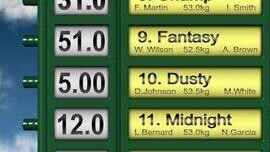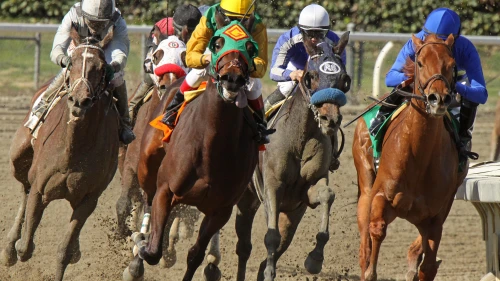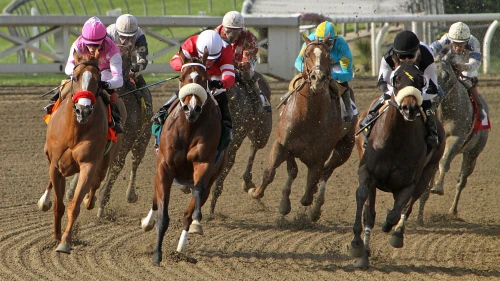
Horse Racing stats man, Andy has contributed to OLBG for 18 years - An Ipswich fan and F1 fanatic, he also contributes EFL football and Motor Sport opinion.
I've read a few statements in the last few weeks on horse racing forums and in the tipping competitions regarding weights carried by horses and unfortunately, they've been very wrong in their approach to understanding horse racing.

I thought I'd discuss what I see as glaring mistakes and oversights into weights.
Hopefully those new to horse racing will learn from this insight.
Handicap Races
The essential function and theory of a handicap race are to give each horse an equal chance of winning the race, based upon their previous or most recent runs at the track.
Theoretically, a handicap should see each runner priced exactly the same, however, we know there are more things at work that just weights.
I've seen a few mentions recently of 'receiving weight' in handicap.
This actually should only be mentioned when meeting the same horse again off different marks.
Stakes Races
For stakes races, there are generally two kinds.
A 'normal' conditions would either be a novice event such as a beginners chase or maiden stakes where the horses are all so inexperienced that the handicapper cannot possibly show a difference in weights and therefore each horse races off a set weight (differing on age/sex)
A Class 1 stakes race where the prime horses race off equal weights to prove their true calibre.
The other type of stakes race are the conditions such as claimers or selling races where the horse's weights are based upon their prospective sales prices.
Jockey Allowances
This is the main one I see, where people blindly assume the amount of weight a jockey takes off a horse will be relative to the variation in performance.
Note I say 'variation' and not 'increase', as it isn't always the case as the details below suggest.
I will compare the relative success of jockeys based upon their weight claim.
These figures are from July 2018 to July 2020
| Jockeys Claim | Strike Rate | Place Strike Rate | Return On Investment (SP) |
|---|---|---|---|
| 3lbs | 8.8% | 25.18% | (-31.19%) |
| 5lbs | 8.26% | 25.02% | (-33.35%) |
| 7lbs | 7.2% | 21.76% | (-35.83%) |
Horses grow for a few years and the small juveniles we see at two years old are a far stretch from the size of the 9 and 10-year-old veterans we see.
Two and three-year-olds are still in rapid stages of progression when they take to the track and as such their capabilities are not fully clear.
The handicapper suggests that males and females are generally not of the same capabilities and therefore males must give away a set amount of weight in order to achieve equality for the race.
Apprentice jockeys are allowed a weight advantage because they are competing against more experienced rivals.
The figures above suggest they are still at a disadvantage despite the weight allowance.
The key is really finding an apprentice who is good value for his claim, the 3lb, 5lb or 7lb claimer will be in demand if he or she has shown they are worth booking.
Weight For Age
The handicapper seeks to achieve parity in races by using a weight for age scale.
Dependent on the time of year a horse will carry a set amount of weight less than older rivals.
The BHA Flat W-F-A Scale can be found here
Similarly to the jockeys' claims, there are horses that will be capable of performing above their allowance and those that will perform below it.
Hope this clears up what I consider to be the most important factor when considering a horses performance,
You can check for further information by visiting this horse racing form article.



